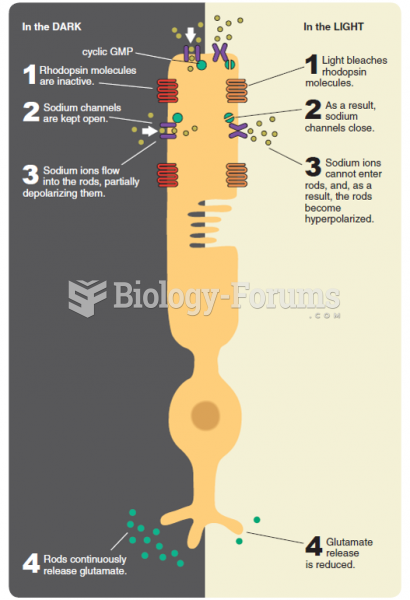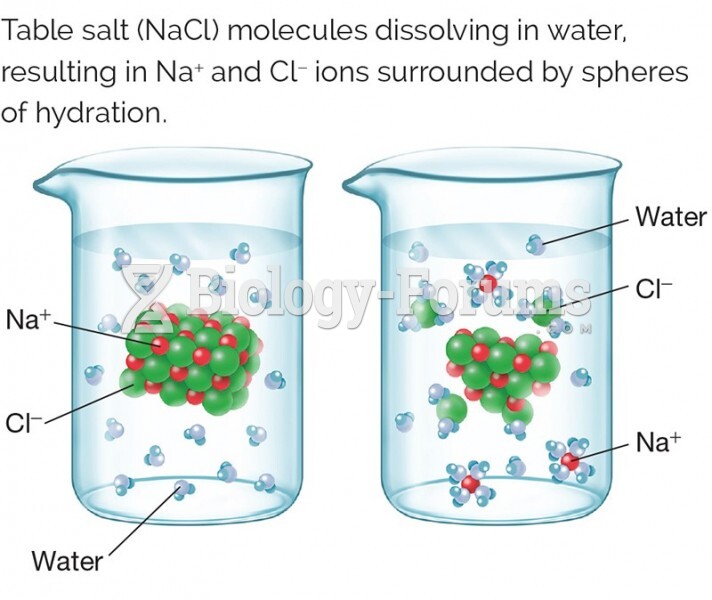|
|
|
In 1885, the Lloyd Manufacturing Company of Albany, New York, promoted and sold "Cocaine Toothache Drops" at 15 cents per bottle! In 1914, the Harrison Narcotic Act brought the sale and distribution of this drug under federal control.
A recent study has found that following a diet rich in berries may slow down the aging process of the brain. This diet apparently helps to keep dopamine levels much higher than are seen in normal individuals who do not eat berries as a regular part of their diet as they enter their later years.
The Romans did not use numerals to indicate fractions but instead used words to indicate parts of a whole.
Medication errors are more common among seriously ill patients than with those with minor conditions.
Eat fiber! A diet high in fiber can help lower cholesterol levels by as much as 10%.







